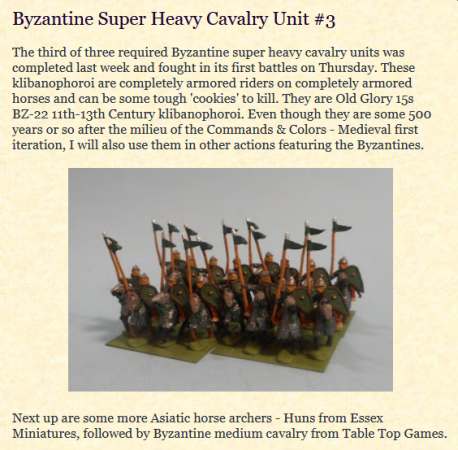Cloaking Technology
The part I thought was going to cause me the most trouble was the cloak. I selected a basic green color, as I did not cotton to the idea of painting plaids, checks or any other patterns. The green (Jade Green) looked like a color your wealthier-type barbarian might wear. The cape is well sculpted, and the folds and flow of the cloak are easy to discern.

I used a watered-down black to shade the paint, and laid out three groups of paint on my palette. I used a drop of extender, a couple of the green, and then one of black to the center blob of paint, and two to the righthand blob. This was to provide the degrees of shading I was attempting to have. I started with the largest fold on the back to get the procedure down - and once again, the paint job looked fine until I looked at it with the eye of the camera. I went back and smoothed out the transitions between the differing shade colors, and then added a highlight color of Jade Green and Elf Grey (with the obligatory extender to maximize my working time).

I think the overall look of the cloak turned out much better on my next go-round, and so I continued on with this process.
Before I proceeded too much further, I took a trick from one of the pro painters (Deane Goodwin). I used the Folk Art Glass and Tile Medium (GTM) straight from the bottle to seal what I had painted and was happy with. The GTM provides a coat that is pretty immune to handling, and also adds a matte to the paint. I did this because I found that the pins I had inserted in the feet were not sufficient to hold such a heavy model to a base for all of the handling I was forced to do. The last thing I wanted to do was go back and start all over on a certain area because the paint had transferred from the model to my hands!








